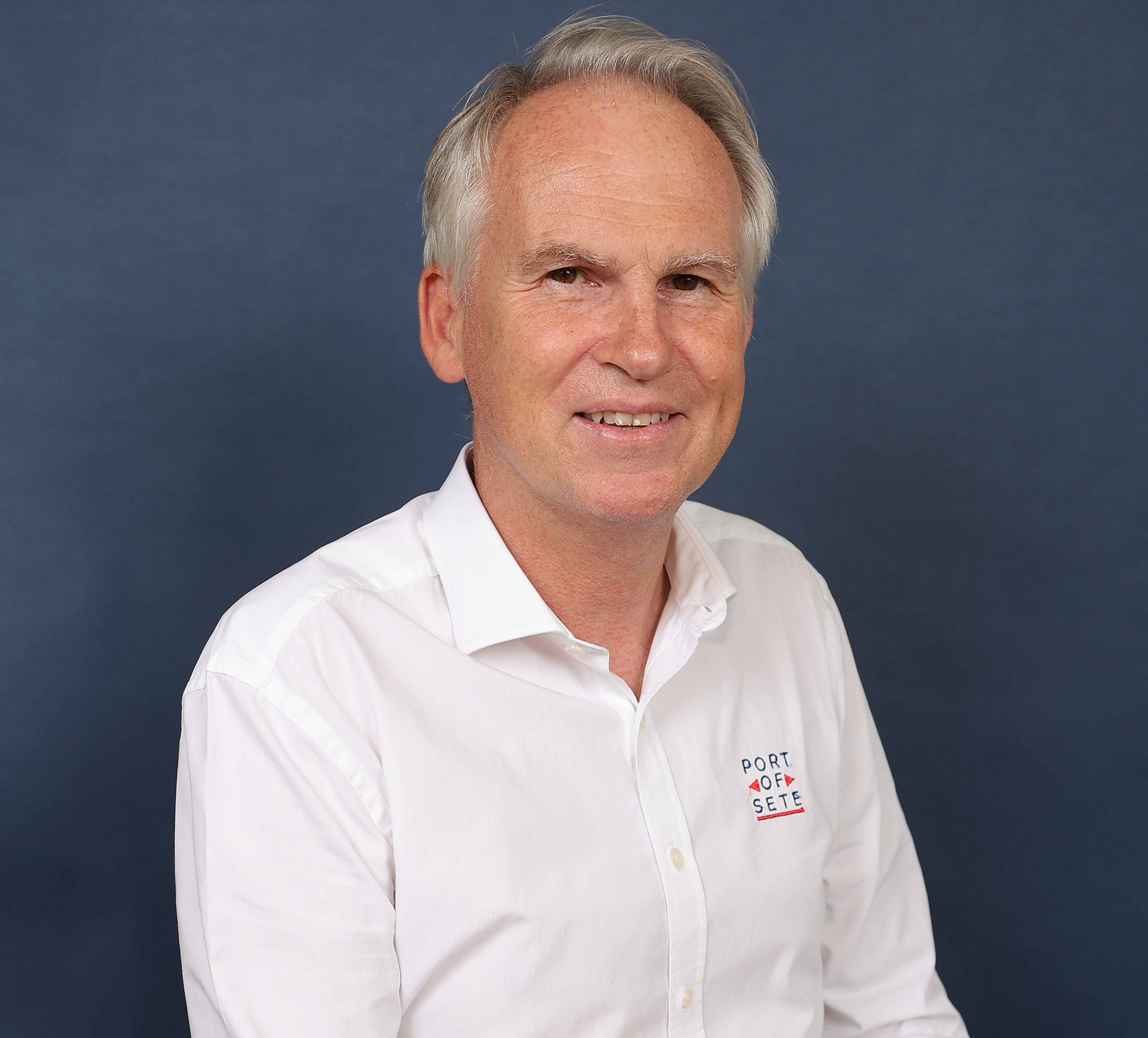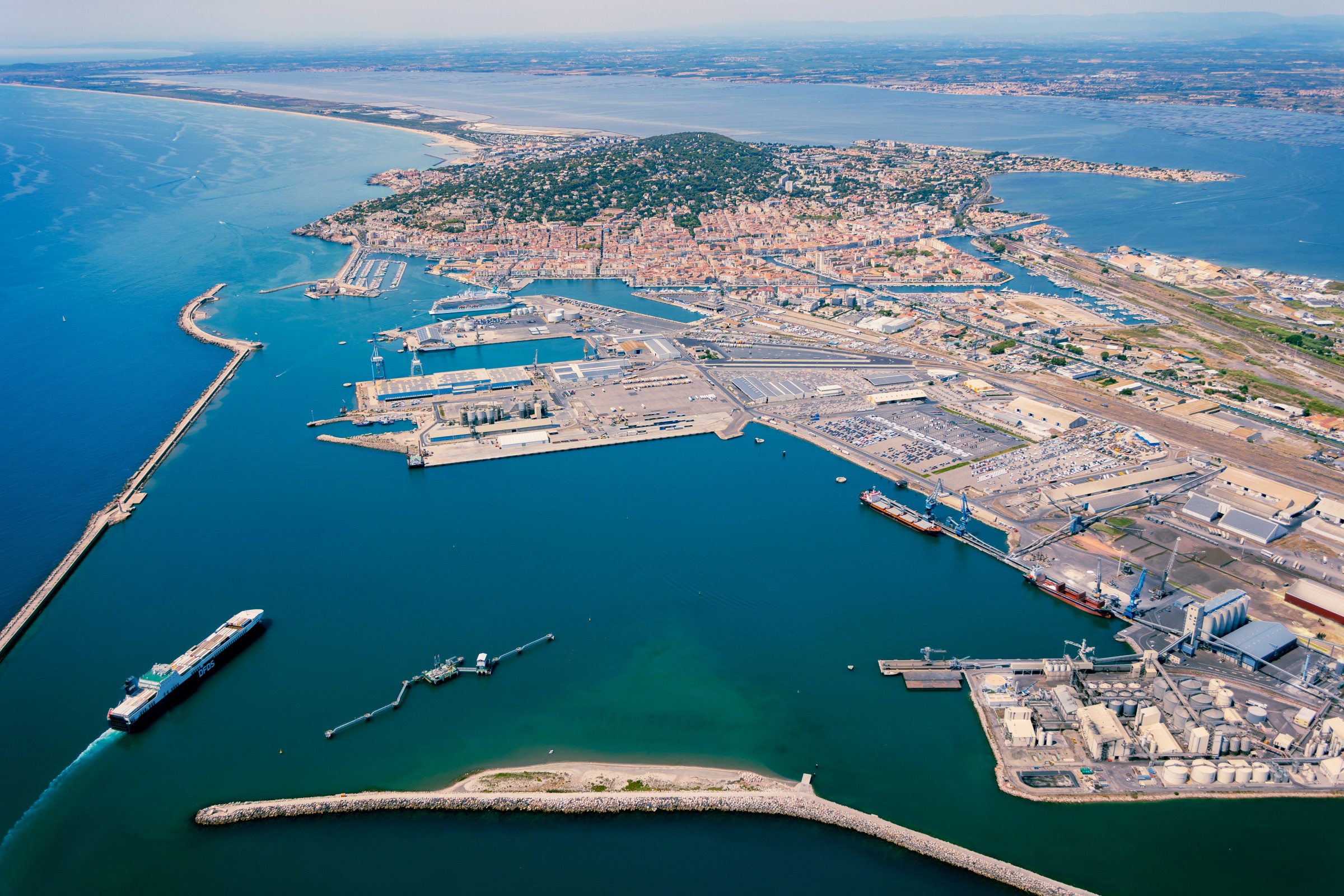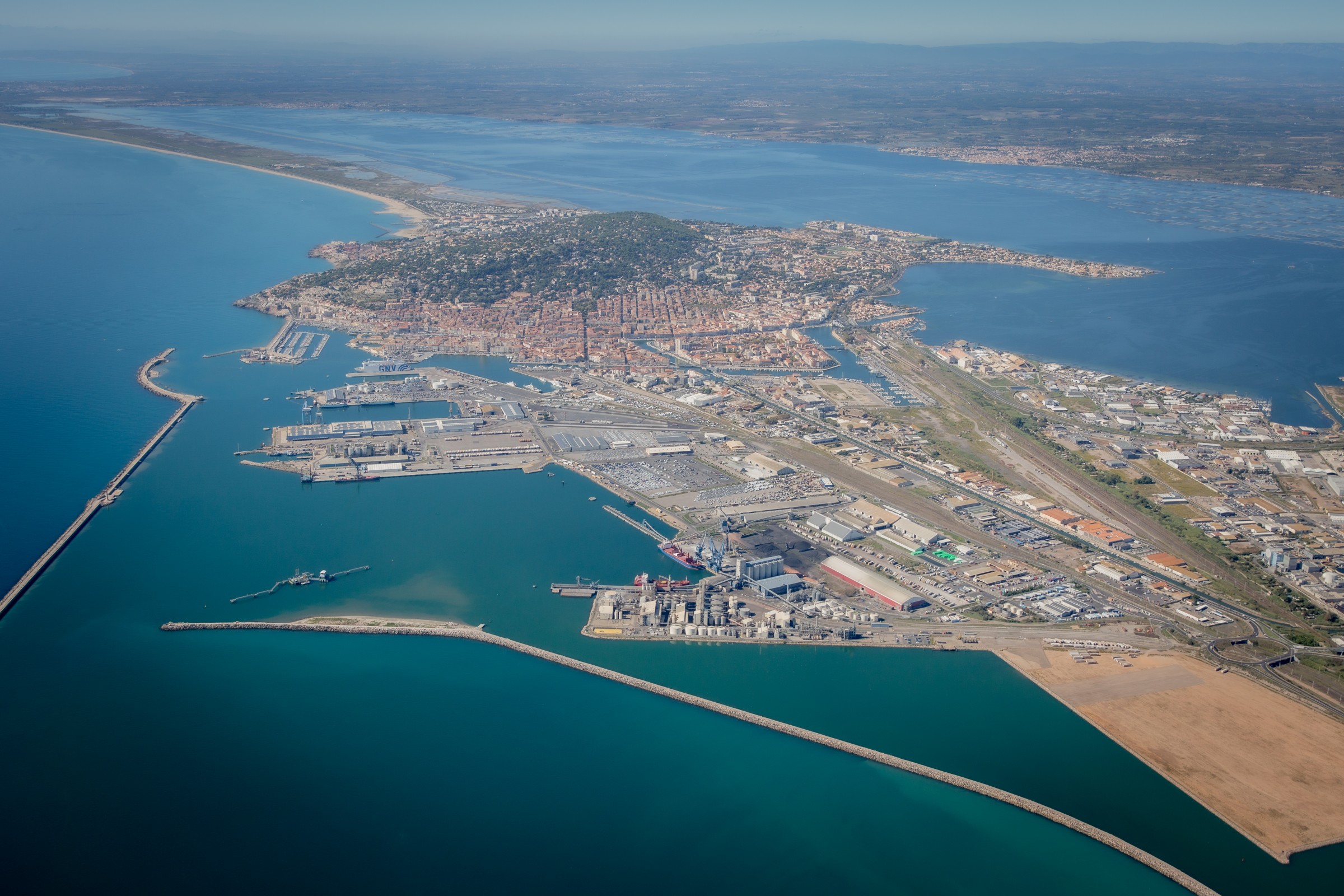31 January 2024
Our port pro of the month is Olivier Carmes, Chief Executive Officer of the Port of Sète Sud de France, since 2014. In what follows, you will read more about investments and sustainability in this Port in the South East of France, as well as digitalisation in the port sector. Discover the other interesting topics our port pro of the month addressed below!

Can you briefly present us the Port of Sète? What are its main characteristics and challenges?
Since the law on the decentralisation of ports, the Port of Sète – Frontignan has been owned by the Occitanie/Pyrénées-Méditerranée region, which created a regional public entity in 2007. Port of Sète Sud de France manages its 3 port concessions: the commercial port, the fishing port and the marina.
The Port of Sète is a real lever for development and economic growth, essential to the competitiveness of regional companies, and also acts as an interface between the various players whose development is directly or indirectly linked to the Port. Its priority objective is to respond to ecological challenges that require innovation, whether in terms of the sustainable development of economic activities, the quality of its services or the preservation of the environment.
What is your long-term vision for the port of Sète? What are the main investment projects for the coming years? Could you briefly describe the importance of these investment projects for the port and the city?
The versatility and development of our activities, means that we need to develop new areas through the ZIFMAR 2 (Zone d'intervention foncière maritime) (30 ha) and build new quays such as the quay named quay I1 (60 million euros and 400 linear metres).
These investments confirm the ambitions of the Port of Sète, as the logistical backbone of the Fos and Port-la-Nouvelle sites, for offshore wind energy by 2028.
We want this growth to be sustainable and acceptable for our direct environment, namely the towns of Sète and Frontignan, which will benefit in the short term from our commitment to decarbonising our activities, with the immediate provision of shore side electricity connections for our shipping companies.
European ports are increasingly investing in digital solutions to improve the efficiency of the logistics chain and port operations. Has the Port of Sète taken any initiatives towards digitalisation?
For several years now, the Port of Sète has been investing in an efficient management solution for its activities. Its main role is to ensure effective communication and coordination between the various players in the port, such as the port authorities, shipping companies and emergency services. By constantly monitoring port operations, it helps to improve the safety and fluidity of logistics flows. Our port solution is an essential pillar in guaranteeing the smooth running and security of maritime activities and the door-to-door traceability of transit to better steer, plan and manage the global logistics chain.µ

Regarding investments, we are aware of the ongoing project for the electrification of the quays of the commercial port of Sète. Please, could you explain us the importance of the project for the port?
The Port of Sète is actively working on limiting its carbon footprint. Our dual objective is to decarbonise our activities and achieve better city-port integration for the well-being of local residents. Electricity supply for ships at quayside is the solution, so that ships can turn off their engines completely when they are at quayside.
This very costly development has been rolled out in several phases: in 2019 we electrified our yachting and pleasure boat activity, at the end of 2023 we electrified our regular ferry and ro-ro lines, and the last stage will be to connect cruise ships by 2026.
How is the Port connected to the hinterland? Does your port have modal split targets?
With a port perimeter covering more than 200 hectares, the Port of Sète offers a multimodal approach to serving a hinterland that is both local and further afield. It offers a massified service for most of the goods flows that transit through it, both by river and by rail, factors that contribute to competitiveness and modal shift, and that meet the challenges of the energy transition.
Since 2021, we have had a new rail platform linking Sète to northern Europe, as well as a river terminal on the Rhône-Sète canal with a capacity of 1,500 tonnes.
What are the environmental priorities for the Port of Sète?
The environmental objectives of the Port of Sète are defined by the 2021-2025 strategic project and more precisely expressed through our Smart&Green port strategy. We attach paramount importance to the protection of the environment, and the responsible and sustainable management of our resources. In terms of electricity, an energy mix has been deployed for more than ten years with the installation of photovoltaic panels on all port roofs, a phase II is already planned with shed houses (8 ha). When it comes to water, we use innovative water treatment and recycling technology, thereby reducing our environmental impact. The preservation of local water resources is a priority, reflecting the port's commitment to environmental sustainability and the responsible use of its resources.
With its Green Deal, REPowerEU plan and Net-Zero Industrial Plan, the EU aims to have a climate-neutral economy by 2050. What are the measures the Port of Sète is adopting to achieve carbon neutrality by 2035? What role can the Port of Sète play in decarbonising the logistic chain?
In accordance with the environmental policy of the Occitanie Region, the port of Sète has been committed to the decarbonisation of its activities for more than ten years. We have always favored circular economy projects, such as for example the creation of the ZIFMAR port extension made with natural sediments from the neighboring construction site for the creation of the new oil wharf. One of the assets of the Port of Sète is its multimodal offer, real factors of competitiveness and respect for the environment. As explained above, onshore power is another measure aimed at port decarbonisation, Resource management is also a real subject that we are going to work on to obtain renewable green energy for self-consumption. Phase II of installing photovoltaic shade structures will allow the port to power import vehicles upon their arrival before their final delivery to the dealership.

Port of Sète is an important passenger port, both in terms of cruise, ferry and yachts. In ESPO Code of practice on cruise and ferry, ESPO stressed the importance of the port city relation. How is the dialogue with the citizens? What are the other challenges?
In line with regional policy and the port's 2021-2025 strategic project, the passenger development strategy is repositioning itself on the quality of cruise calls in terms of reception and services. Today, the new strategy is based on a green cruise at sea, on land but also on excursions. This responds to a very strong evolution in the sector, with more virtuous ships, which favour excursions on a human scale, more respectful of the territories and the inhabitants.
Sète is attracting quite some spectacular yacht ships. Are you the new Cannes?
No, the yachting activity continues to develop in Sète because we have the capacity to accommodate the largest yachts in the world but we have another role than Cannes. Our target is not the owners but the crews for whom we offer real assets: professionals with local know-how for maintenance, mechanical, decoration and carpentry work; but also, leisure with proximity to the city of Sète for all the amenities and the sweetness of the South of France. Sowe are mainly accomodating yachts and their crew when they are getting prepared for the season, for when their owners come to then sail from here to the jet set ports and locations. The attractiveness of the Sète marina has also been made possible by the intervention of the global shipyard Lurssen.
The greening of a port is a task which requires the help of all port stakeholders. What can a port authority do to engage all stakeholders in making their operations more sustainable?
Pragmatism and sustainable development concern us all! For example, we provide the capacity to connect to shoreside electricity at cost price, thanks to an instrument financed 80% by European funds and the remainder by a collective contribution to the residual cost. The port of Sète also rewards the most sustainable ships, with a reduction in port call costs thanks to a coefficient applied according to the ship's ESI (Environmental Ship Index). Multimodality supports the development of maritime activity, as for the Turkey/Great Britain line via the ports of Sète and Calais.
How did you get into the port business? How did your career path lead to this position?
My initial training was a Master's degree in Economics from the University of Caen, followed by a Master's degree in SME Management from the University of Tours.
Initially introduced to seafood products as Deputy Director of the Guiana Fishermen's Cooperative, I relaunched the business and restructured the cooperative's financial health. I then became Director of the Fishing Port of La Rochelle for a period of three years, during which I managed to increasethe business by 10% after 5 consecutive years of decline.
Later I joined the Grand Port Maritime de la Rochelle as Head of Development, which plunged me into the world of commercial ports.
The Grand Port Maritime de La Guadeloupe offered me the position of Director of Development and Deputy Managing Director for a period of five years, during which time I steered the project to create a container terminal (€160m). For more than ten years now, I have been serving as General Director of the Port of Sète-Frontignan, for the management of the commercial, fishing and pleasure ports. In July 2019, my actions for maritime development and influence were rewarded with the insignia of Knight of the Order of Maritime Merit.
Lastly, if you had to bring us to your favourite spot in the Port of Sète, where would you take us?
Every morning, I'll be taking you on a tour of our three ports:
The commercial port for the diversity of its activities, every day is different, ferries, cruises, livestock Ro-Ro vessels, bulk solid, liquid ...At the marina, for escape, tranquillity, a holiday spirit, adventure, the diversity of our waterways, the Etang de Thau, the canals and the Mediterranean Sea. At the fishing port, for the traditional spirit, the history of our town, the commitment of the men of the sea, for the daily sale of our products...
If I had to choose just one place, I would choose the viewpoint from which I can see all 3 ports, including the Etang de Thau and the shellfish industry, which is also part of our port activity.
.jpg)
Related documents
No attachments.
